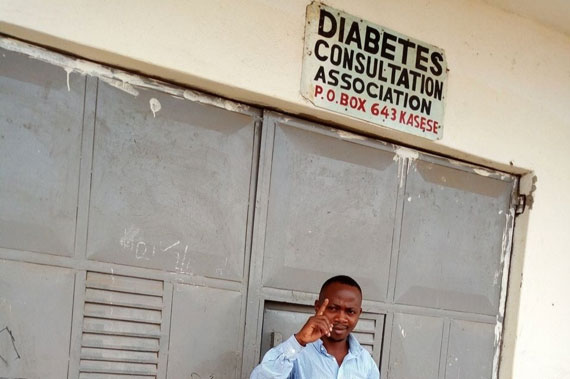Diabetes commonsense
Introduction: Enter Dr Lawrence
Balance: Signpost to Success
Juggling the Blue Carbohydrate and Red Insulin Balls
The Great Debate: Natural Animal or Artificial ‘Human’ Insulin?
Conclusion: Commonsense Rules
Diabetes Common Sense

Juggling the Blue Carbohydrate and Red Insulin Balls
Jugglers need to know the shape, size and weight of the balls they are juggling. I have met diabetics who were hopelessly lost because the word carbohydrate had never been explained to them and they had no idea of how much carbohydrate to eat each day. Their blue carbohydrate balls were therefore falling about in all directions, unrelated to the insulin or tablets they were taking and completely out of control. This chaos need not happen to you. With the help of your doctor and dietician, you can be sensible and decide what to do. Modern treatment gives you freedom. You do not have to be starved, deprived or over-fed. The only thing that matters is to adopt a mindset that encourages us to keep our carbohydrate intake the same each day. Commonsense shouts the message that anybody who eats a lot of carbohydrate on Monday and very little on Tuesday is not going to feel well. Because diabetics have lost the automatic blood sugar control system which others enjoy, this is especially true for them. To keep carbohydrate intake steady is as important as to keep the blood sugar steady.
This message had not reached an elderly lady who shared a hospital ward with me. She became bad-tempered and cranky when her blood sugar went out of control, although she insisted that she always obeyed the rules. I watched her and was horrified to notice that she was constantly helping herself to the fruit that her visitors showered upon her. She would not listen to me when I told her that the extra carbohydrate in the fruit was enough to explain her unwelcome high blood sugar. Her doctor had told her that fruit was good for her and that was that.
How much you want to eat each day is for you to decide. Your dietician can suggest various choices but only you can make a true commitment and determine to fulfil it. I know this is difficult because I have been a Captain in the Fight-Against-Flab Army for many years and my indiscretions have always prevented my promotion to Colonel. Keeping the balance right, not eating too much or too little, will never be easy but the good health reward for success makes the effort worthwhile. You have only to scrutinise your naked body in the mirror to see whether the billows and bulges are attractive or just floppy rolls of ugly fat getting in the way. The stark truth is that slimming means eating less and exercising more. Huge profits are made at our expense from special diets and slimming aids. These are costly ways of telling us that our will power is weak and it is time we tried harder.
Once you have taken your first flight and are on the way to becoming a fully-fledged diabetic, you will become aware that insulin and carbohydrate work together. If you decide to take extra carbohydrate, you will need extra insulin to digest it. Imagine you are invited to a birthday dinner on Saturday. When you return home after the feast, you will have to consider how much extra carbohydrate you consumed. Do not panic or feel guilty; an occasional high blood sugar is not a crime. To digest the extra carbohydrate and restore the balance, you could take a brisk walk, eat less carbohydrate at the next meal, or inject a little extra insulin – two or four units will probably be enough.
When we know the amount of carbohydrate we need to balance the insulin, how do we help ourselves to keep the balance right? For me, the easiest way is to divide the day into three parts – morning, afternoon, evening. If my dietician and I have selected 300 grams as the daily norm, then 100 grams is eaten for breakfast and elevenses, 100 grams for lunch and tea, and 100 grams for supper and bedtime. This plan allows flexibility and a sensible spread over time. If you are hungry, more can be eaten for lunch and less for tea; if you are not hungry or in a rush, you can eat less for lunch and make up by eating an extra bun or sandwich for tea. Diabetics are often told they must have three main meals and three snacks daily. These instructions suggest a timetable that is difficult to carry out for a person leading a hectic life. All that is necessary is to know what you are doing and avoid stuffing yourself at one moment and starving yourself the next. Your body cannot be expected to perform well if you throw different amounts of food at it every day and never allow it to integrate with the insulin flowing through your veins.
Being diabetic has the great advantage that it requires you to stick to a pattern of eating that is healthy for everybody. There is no such thing as a diabetic diet. A healthy diet for you is also a healthy diet for your family. You need not waste money on special diabetic foods. An emancipated diabetic can eat anything; the only limitation is to eat the right amount at the right time. The signpost pointing to healthy eating will read ‘low fat, high fibre, with plenty of fresh fruit and vegetables.’ It is the carbohydrates that need to be carefully managed, whether you are on insulin, tablets or diet. Proteins (meat, fish, eggs, nuts, beans, lentils) and fats can be eaten in normal helpings.
A true, cautionary tale might be useful here to embroider the word ‘normal’. At a diabetic clinic, I found myself sitting beside a handsome, but overweight, young man. He complained that he never felt really well and could not lose weight although he always kept strictly to his diet sheet. I asked him to tell me everything he had eaten yesterday and what he planned to eat tomorrow. I was appalled to discover he thought he could eat as much cheese as he liked, and he was eating nearly a pound of cheese each day. No wonder he felt ill and could not lose weight! He badly needed an injection of commonsense.
I have found the easiest way to eat the right amount of carbohydrate is to follow the ten-gram exchange system invented by Dr. Lawrence. This method has fallen out of favour lately, perhaps because it can be followed without the help of a qualified dietician. It simply tells you how much of each food is equivalent to ten grams carbohydrate and leaves you to mix and match the ten gram portions to your taste. For example, one slice of bread counts as about one ten-gram portion. It can be exchanged for any one of the following: two cream crackers, one egg-sized potato, one medium apple, one orange, half a large banana, ten strawberries or ten grapes, three large plums or apricots, and so on. This list of ten-gram exchanges can be extended at will. The idea is even simple enough for young children to use.
I remember, as a rebellious seven year old, kicking against injections and food rules, how Dr. Lawrence took the wind out of my sails by telling me I could eat whatever I liked; all I had to do was to remember what I had eaten and tell my mum about it, and not try to deceive her or myself. It did not take me long to put this teaching into practice. At school, my teacher and my classmates knew about my diabetes and that I had to eat one large banana, twenty grams carbohydrate, at break. This routine bored me stiff. I cut my banana in two, ten grams each, and started to swap with what my class friends had brought for their mid-morning break. Banana was a novelty for them and they were as keen to try it as I was to be rid of it. This developed into a fascinating barter system. One day half a banana was swapped for a digestive biscuit, next day for half a sandwich, then for three toffees. Becoming braver, both halves of the banana were exchanged for a biscuit and an apple, or an orange and ten smarties. Break became exciting, not boring. I did not feel deprived any longer and have not done so since. I remembered the second part of Dr. Lawrence’s instructions. I always told my mother exactly what I had eaten and I was always praised for doing this. When she called to collect me from school, my friends would rush over to tell her all about that day’s banana exchanges!
Health and happiness are dislocated if you eat too much or too little carbohydrate. What matters is that the bullseye of the carbohydrate target is hit each day. When this is achieved, the insulin and the carbohydrate will fall into each other’s arms and waltz along happily together. A clever juggler will be able to keep the blue balls balanced and have the confidence to try wonderful new ways of eating and living.
We juggled with the carbohydrate first because this is easier to balance than the insulin. We can control and measure what we put into our mouths even if we sometimes cheat. Although insulin, too, can be accurately measured, it is more difficult to balance because its behaviour is influenced by many factors, some of them outside our control. Remember, insulin does not work on its own. It plays an essential part in our hormone orchestra. If other hormones, for example, adrenalin or thyroid, are discordant, we will have a hard job trying to keep the insulin in tune. We also need to be aware that exercise, infection, stress and weather are four awkward customers, difficult to deal with because they change all the time, upsetting the insulin balance and defying scientific measurement. Perhaps this could explain why diabetic experts often ignore these factors when teaching us how to live with our diabetes.
It might be helpful to explore the features of these four awkward customers. Consider exercise first. If you think about it for a minute, you will realise that whenever you take physical exercise not part of the normal routine, you will burn up extra energy (sugar) and therefore need less insulin or more carbohydrate to keep the balance right. For example, before playing a strenuous game of tennis, you should take a carbohydrate snack to provide the extra energy you will be using. This is the moment to indulge in a chocolate digestive biscuit without the bitter taste of guilt that might spoil the flavour at other times.
The second awkward customer is infection which can play havoc with the required insulin dose. Be prepared. Note carefully what is happening and do not be taken by surprise. A sudden increase in insulin dosage is nothing to worry about and when you get better, the fall back to normal may be equally sudden. Recently, a bad bout of influenza caused my insulin need to double almost overnight. Three days later, as healing progressed, my body picked up its normal rhythm and the insulin went back during the next day to its usual dose.
Stress is the third awkward customer that you need to be aware of as it arrives uninvited, upsets the balance and is difficult to counteract. Dr. Lawrence used to warn us, “When the stock exchange falls, the blood sugar rises!” Moving house, unemployment, exams, family problems, bereavement and accidents are some of the experiences that may trigger stress-related insulin upsets.
The fourth awkward customer, the weather, is the one that is completely beyond our control. It creates variable conditions that affect the rate at which we burn up energy and use up insulin. As my husband used to say, on a frosty morning or a hot, dry summer day, “Watch out! This is hypo weather. Be careful. Be sure to have your glucose sweets in your pocket.” In my experience, on a crisp, dry day, I would feel symptoms of an approaching hypo half an hour earlier than on a sultry, humid day. Knowing this, I could be prepared and avoid trouble. ‘Fore-warned is fore-armed,’ says the old proverb.
These variables, the four awkward customers, make juggling the red insulin balls a difficult but fascinating challenge. Their existence reminds us that we are not a chemical experiment, whatever the diabetic clinic thinks. No insulin dose is ever perfect, but we can feel pleased and proud when the blood sugar obeys our instructions and remains reasonably steady.
It will be easier to manage these delicate red insulin balls when we investigate how our blood sugar levels rise and fall during the day. To do this, I suggest we set aside a testing week when the weather, your carbohydrate intake, and your stress levels are pretty stable. Test your blood sugar four times a day for seven days. It is clearer if you enter the results on graph paper. If the first test is on waking and the second around midday, the third at teatime and the fourth at bedtime, you join these four dots and this shows the blood sugar profile for the first day. Repeat this for seven days. The results at the end of the week make it possible to draw an average daily blood sugar profile. Next time you attend the diabetic clinic or see your consultant, ask them to draw their version of your blood sugar profile and compare notes. It will be interesting to find out which of you is more accurate.
Nobody likes to test but it has to be done, whether we use a urine or blood sample. We need to do this to control our diabetes and not let it control us. We should not test to please a relative, a doctor, a scientific study or an enthusiastic salesman. Be careful not to become a diabetic bore, obsessed with constant testing. Doing a test is a waste of time and money unless the result can be used to plan future action and manage our diabetes better.
Finger-pricking blood tests are faster, more accurate, more expensive and more painful than using a urine sample. This does not always make them the best. Nowadays, home testing blood sugar meters have become popular. They are in universal use in rich countries where the expensive test strips can be afforded. The decrease in hypo warnings and the quicker action of the new ‘human’ insulins make frequent testing more necessary. The manufacturers of these high-tech machines must be rubbing their hands in glee as they watch their profits mount. The remarkable accuracy of these meters is one of their chief selling points. The fact is, however, that such accuracy is irrelevant.
Every doctor knows that blood sugar, like blood pressure, does not remain static for diabetics or non-diabetics. By the time the result has been recorded, the precise measurement will have changed. If the test result is 5.6 mm now, it will have moved up or down to perhaps 6.2 or 4.3 mm half an hour later. The amazing accuracy of these high-tech blood testing meters does not greatly help us when what we really want to know, to understand our diabetes, is whether the blood sugar is low, medium or high and whether it is rising or falling. Their detailed information only serves to distract us from the truth that blood sugar is always rising or falling, constantly changing, whatever test method is used.
These modern machines are not yet clever enough to respond to this fundamental truth. Professionals do not seem to acknowledge how important it is for diabetics to know about the rise and fall of blood sugar, or if they do, they do not always tell this to patients. After many years experience, I have found that dipping a test strip in urine, though the results are less accurate and less immediate, tells me all I need to know. If the bladder is emptied and a second sample taken fifteen minutes later, the answer is immediate enough for normal purposes and I am not diverted by misleading accuracy.
The diabetic establishment favours synthetic ‘human’ insulin and finger-pricking blood sugar testing machines. Some of us, not part of the establishment, may think differently. Just as we may prefer to stay with the slow, gentle action and more satisfactory warnings of hypos that animal insulin gives us, so we may also wish to use the urine testing method to avoid the sore fingers caused by frequent finger-pricking. Expert advisers, perhaps influenced by pharmaceutical companies, seem to have forgotten that clever machines have no natural instincts. We would have to stop the clock and hang in suspended animation to give meaning to the delicate precision presented to us by these modern test meters. Time moves on and we move with it.
The red insulin balls gradually become more friendly and familiar as we learn not to expect miracles, or be disappointed when stress, infection or weather temporarily disrupt blood sugar levels. Our confidence increases, we make fewer mistakes and we handle them better. We train ourselves to tune in to the song of our own good health.


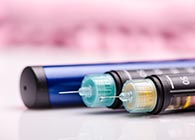


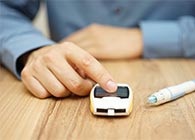




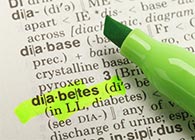

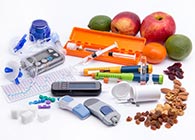
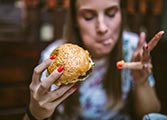

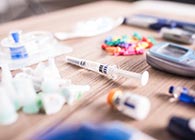





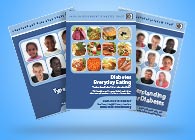

 The InDependent Diabetes Trust is very much a patient/carer centred organisation. It is run by people who live with diabetes for people, who live with diabetes so we understand some of the day to day difficulties that occur.
The InDependent Diabetes Trust is very much a patient/carer centred organisation. It is run by people who live with diabetes for people, who live with diabetes so we understand some of the day to day difficulties that occur.